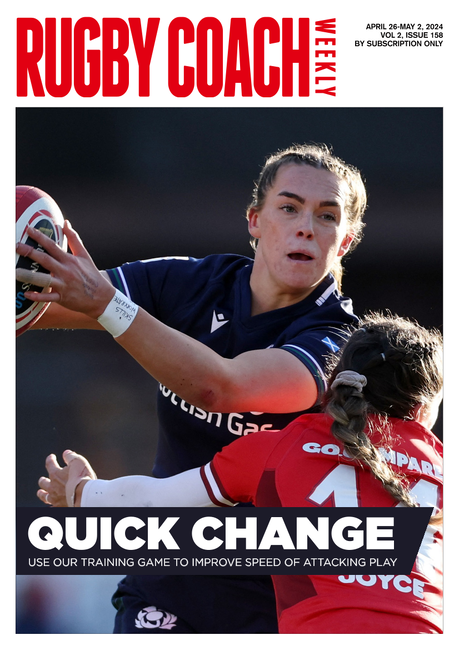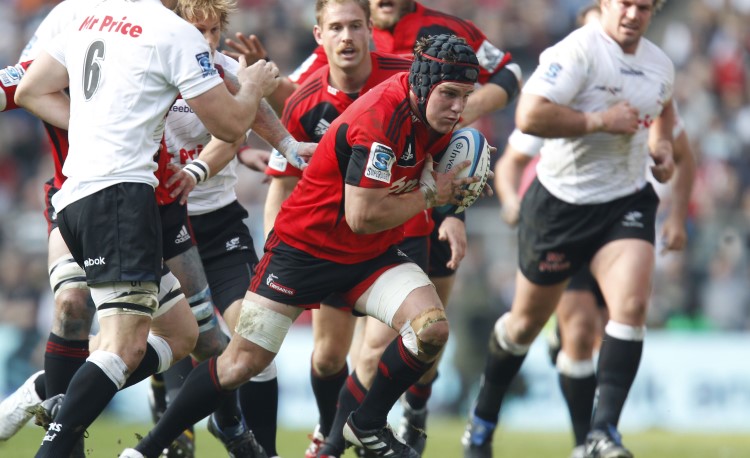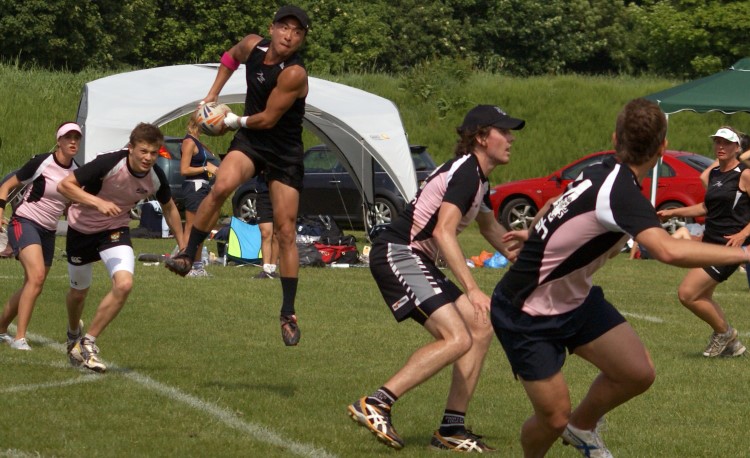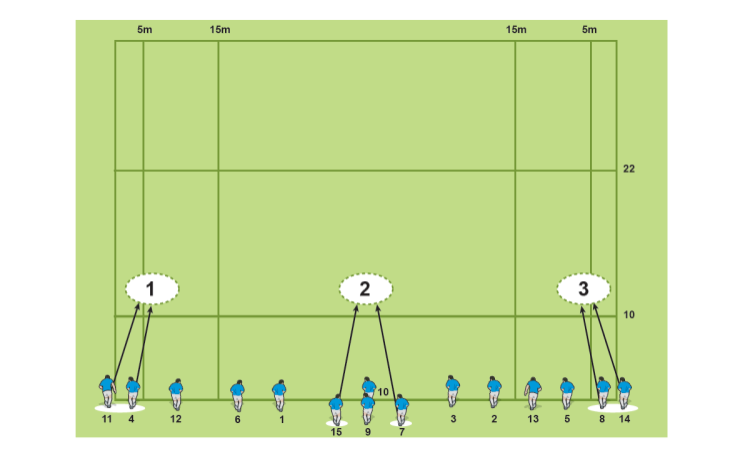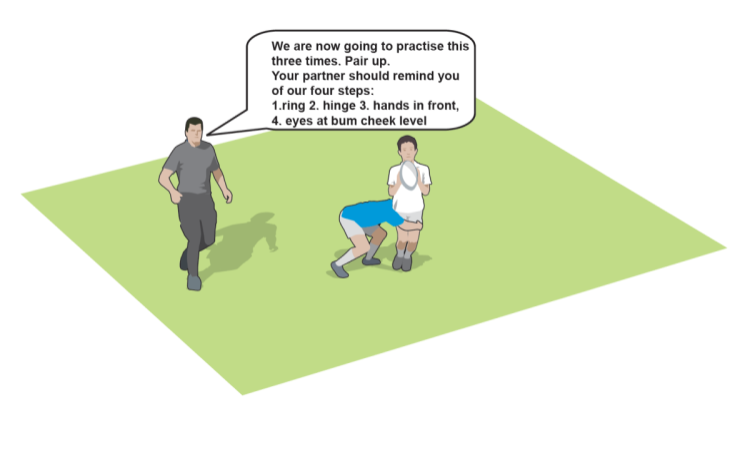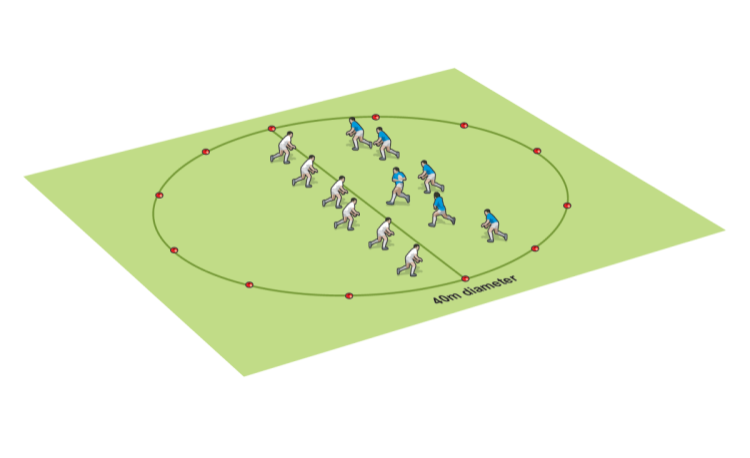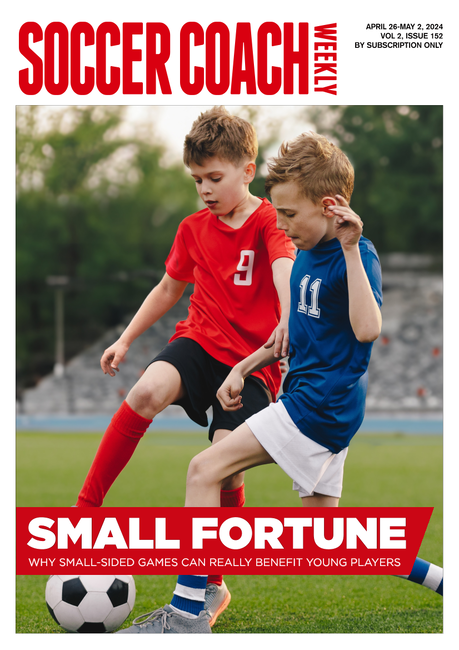You are viewing
1 of your 2 free articles
Return to play: Social distancing session part one
Here is a 20 minute session which can be run with five players and one coach, all keeping 2m distance apart. It has elements of competition and pressure to put skills under pressure.
We've kept it simple. You don't want to have players standing around listening to lots of instructions. Plus, you want to keep it simple for your co-coaches, who may not be that experienced.

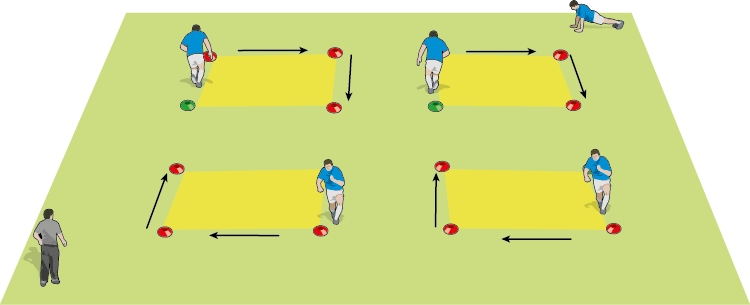

For more ideas if you have parents at the session and they want to work on specific skills:
We've kept it simple. You don't want to have players standing around listening to lots of instructions. Plus, you want to keep it simple for your co-coaches, who may not be that experienced.
RTP session1
| Activity | Timing |
|---|---|
| Warm up | 5 minutes |
| Races | 6 minutes |
| Game | 5 minutes |
| Game developments | 4 minutes |
SET UP

- In a 25m box, mark out four 5m boxes, 5m apart.
- The area is for five players and one coach. If you have lots of players, then you have a number of playing areas. The "coach" is simply there to act as a referee.
- Warm up with Activate exercises, for example: Pogo jumps or Ski Jumps.
SIMPLE RACES

- Put a player on the corner of each box, with the spare player doing an exercise (or resting). Pairs race against each other going along three sides of their box.
- Note the starting positions, the green cones. In the picture above, the top pair are racing against each other, and the bottom pair are racing against each other.
- After each race, rotate the players, so they are racing against someone new.
- If some players are winning more, then they have to start at a different point.
- After each players has run in each box, change the direction, so they are running anti-clockwise.
- If you have four players, then no player rests. If you have three players, then one rests each time, but have quick turnaround. Or, run three at a time, but put a box along side so it is a line of boxes instead in a square shape.
- Each player starts in a different way. For example, on their fronts or their backs.
- Each player starts with a ball.
- Each player picks up a ball along one of the sides of the square.
- Each player performs a forward roll along one of the sides.
- With all these options, rotate which player chooses which option to use.
PASSING GAME

- Taking into account the ball will need to be washed and the players constant keep washing their hands, play with one or two balls.
- The players have 30 seconds to score as many points as they can. One point from passing to a player diagonally.
- They get no points for passing to an adjacent box.
- The defender in the middle aims to knock down any passes. There are no points if the ball lands or is caught outside the boxes.
- You can score extra points for kicks, and double points if the kick is with their wrong foot.
- Add in rules like the ball must be passed at least once to an adjacent box before another point can be scored. Or, if a player catches the ball with both feet off the ground.
- Use balls other than a rugby ball, though since we've been away from rugby for so long, more time with a rugby ball is better.
For more ideas if you have parents at the session and they want to work on specific skills:
Newsletter Sign Up
Coaches Testimonials

Gerald Kearney, Downtown Las Vegas Soccer Club

Paul Butler, Florida, USA

Rick Shields, Springboro, USA

Tony Green, Pierrefonds Titans, Quebec, Canada
Subscribe Today
Be a more effective, more successful rugby coach
In a recent survey 89% of subscribers said Rugby Coach Weekly makes them more confident, 91% said Rugby Coach Weekly makes them a more effective coach and 93% said Rugby Coach Weekly makes them more inspired.
Get Weekly Inspiration
All the latest techniques and approaches
Rugby Coach Weekly offers proven and easy to use rugby drills, coaching sessions, practice plans, small-sided games, warm-ups, training tips and advice.
We've been at the cutting edge of rugby coaching since we launched in 2005, creating resources for the grassroots youth coach, following best practice from around the world and insights from the professional game.
More from us
© 2023 Rugby Coach Weekly
Part of Green Star Media Ltd. Company number: 3008779
We use cookies so we can provide you with the best online experience. By continuing to browse this site you are agreeing to our use of cookies. Click on the banner to find out more.



